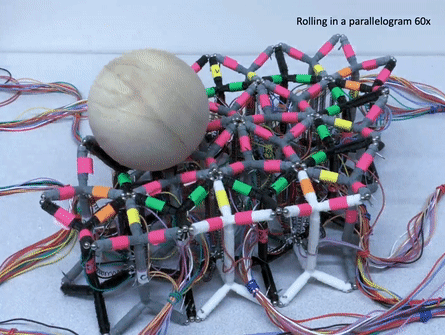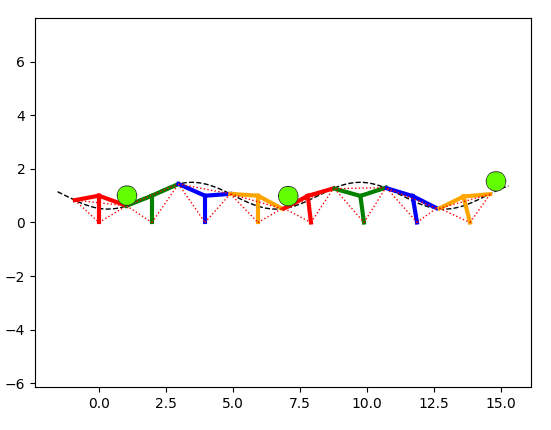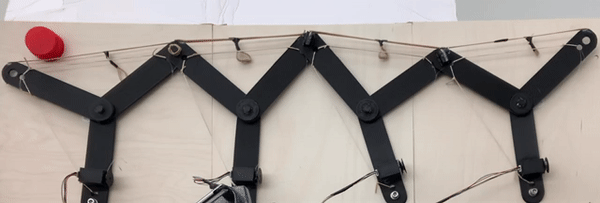Tensegrity structures are lightweight, durable, energy-efficient and compliant, giving them unique advantages over other traditional types of autonomous robots in a number of applications. As tensegrity robots are difficult to control due to their complex structure, one of the greatest challenges in the emerging field of tensegrity research is finding effective methods and uses for tensegrity automation. While tensegrity locomotion has been widely researched, structures inspired by tensegrity robots also hold potential for composing larger modular systems that can be used for object manipulation, where achieving effective automation becomes even more challenging.
Three Dimensional Platform
Zhao L, Wu Y, Blanchet J, Perroni-Scharf M, Huang X, Booth J, Kramer-Bottiglio R, Balkcom D. Soft Lattice Modules that Behave Independently and Collectively. IEEE Robotics and Automation Letters. 2022 Mar 18.
We exploit the opportunities presented by soft, modular, and tensegrity robots to introduce soft lattice modules that parallel the sub-units seen in biological systems. The soft lattice modules are comprised of 3D printed plastic “skeletons,” linear contracting shape memory alloy spring actuators, and permanent magnets that enable adhesion between modules.
Two Dimensional Platform
Perroni-Scharf M. Object Manipulation with Modular Planar Tensegrity Robots.
In this platform, planar modules are linked together to form a larger tensegrity robot that can be used to achieve non-prehensile manipulation. In this work, I developed a continuous curve approximation method for tensegrity robots and analyses the degrees of freedom and physical properties of tensegrity systems. I then constructed and actuated a modular planar robot composed of planar three-bar tensegrity structures. This robot passes objects along the top of it by moving to various stages of a time-parametrized sin wave, allowing objects to roll along the top surface of the robot's elastic skin.


